Historically plates with ships and maritime motifs have been very popular both in Denmark and abroad. Denmarks proud naval traditions have had great importance for the many plates that have been made with motifs of ships. Both Royal Copenhagen and Bing & Grondahl have made many plates that reminds us of the naval traditions.
Windjammerplates B&G
Among the most beautiful of the many ship plates are without a doubt the windjammer series from Bing & Grondahl.
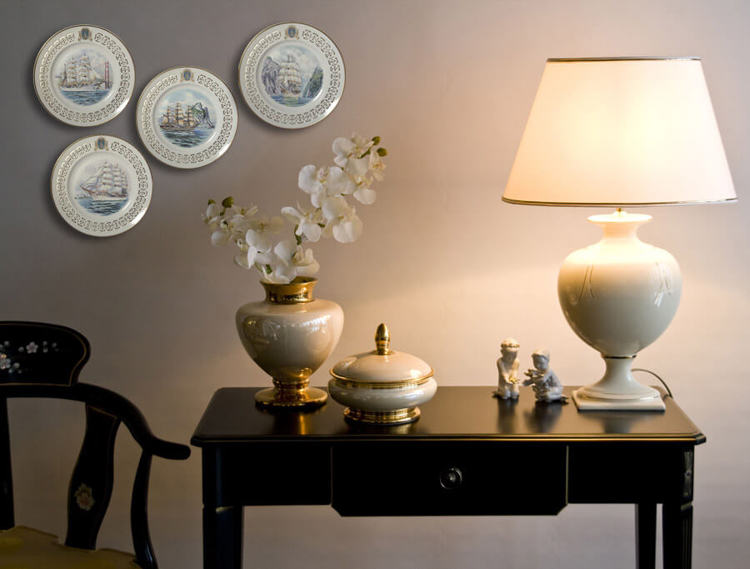
The Windjammer was the last great class of sailships in use for transport on the oceans. They were in use from the second half of the 19th century until around 1950 with its heyday being in the period 1870-1900. They were the largest sailships to ever be built and could transport between 2000 and 5000 ton. The largest windjammer that was built was Preußen, which had a capacity of up to 7800 ton.
The windjammers were sailship of the industrial age built using the most modern techniques. The hull was made og iron and steel, which gave room for far more cargo than in wooden ships. The sails had mechanical control to reduce the need for crewmen to service the ship.
The ship is fast and can under the correct wind conditions maintain a cruising speed of 15 knots (28 km/h) and some have reached 21 knots (39 km/h). Compare this to modern freight ships like the Maersk Triple E class that have a maximum speed of 23 knots.
The winjammer was faster than the steamships that it competed with. Furthermore it could travel its route with fewer stops than steamship since it did not have to seek port to bunker coal or oil or have fresh water for the steam engine. The windjammer was only dependend on fresh supplies for the crew on the trip.
In the end the windjammer was outperformed due to the large carrying capacity and better ability to keep schedules of the steamships, as the steamers were not dependend on the wind.
The windjammer is still with us as training ships, which are also the ships shown on Bing & Grondahls Windjammer plates, where the first is adorned by the Danish training ship Danmark.
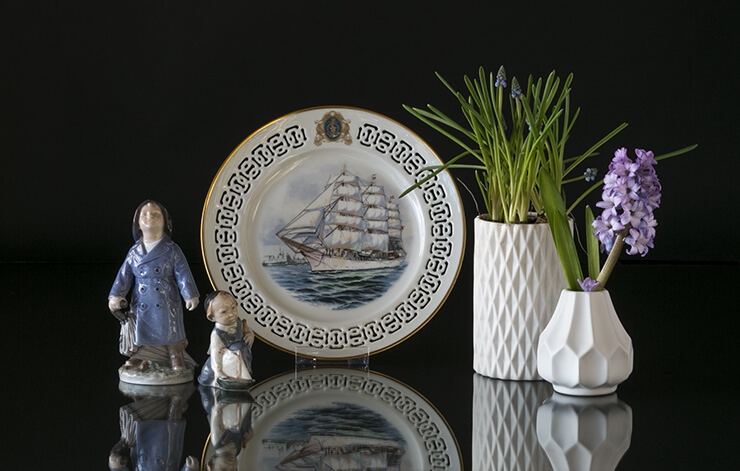
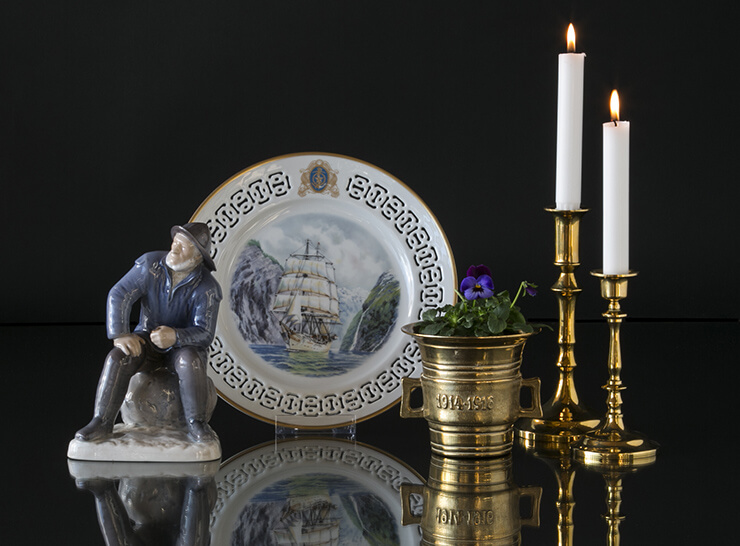
Ship plates B&G
Bing & Grondahl also issued a series of ship plates between 1971 and 2000 when the series ended. This series shows famous Danish ships both with sail and engine. The series started with to plates showing the training ship Georg Stage in both 1971 and 1972. Then follows a row of other training ships; 1973 The Training Ship Danmark, 1974 The Training Ship Lilla Dan, 1975 The Training Ship Viking, 1976 The Training Ship København.
In 1977 it is the steamschonner Hans Egede that adorns the plate. Of the more famous ships on the ship plates we find the frigate Jylland in 1979, Galathea in 1986, Selandia the world's first operational diesel ship in 1988, Fulton in 1992 and Jutlandia in 1998.
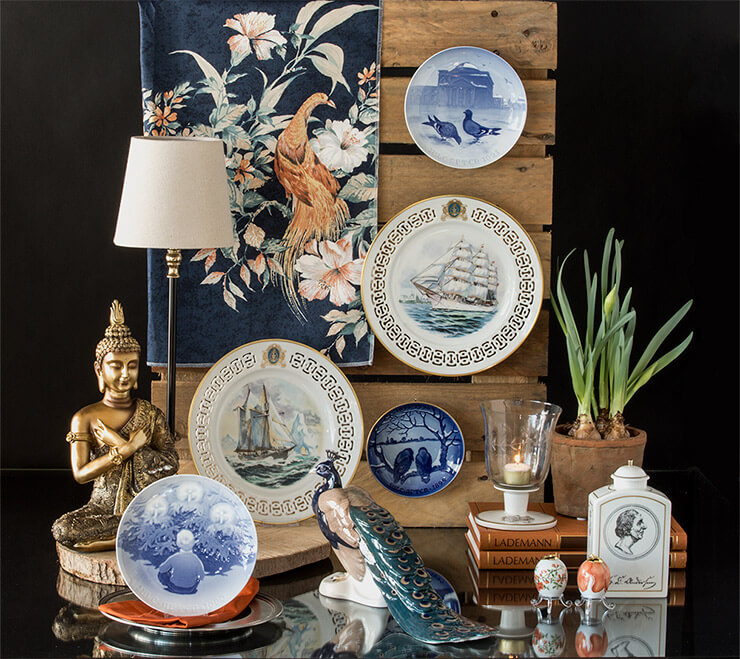
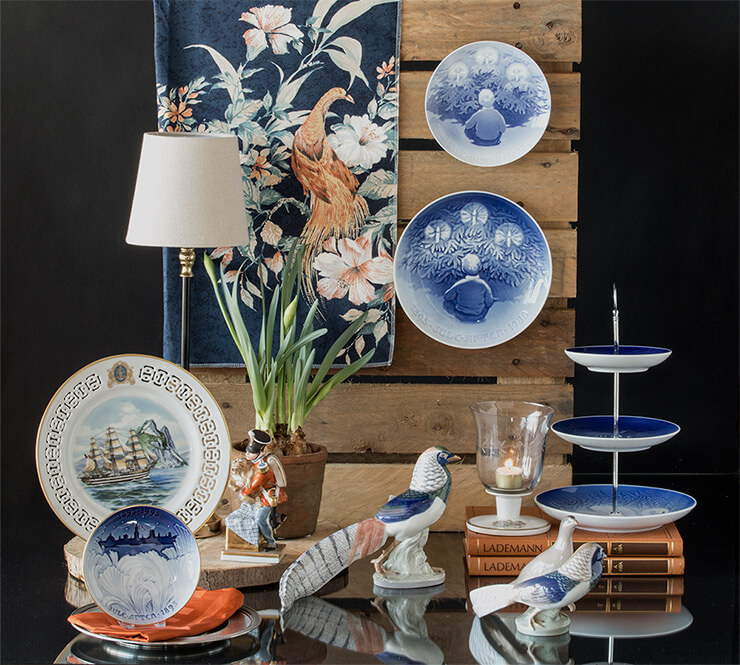
Royal Copenhagen The Navy's Christmas Plates
Royal Copenhagen has issued two series of the Navy's Christmas plates. One with a blue edge and one with a white. The motifs on these are not necessarily ships, but motifs related to the navy. Thus the series with a blue edge has Tordenskjold as motif in 1966 and Niels Juhl in 1977. The series with a white edge lasted the longest from 1961 to 1985, while the blue series lasted from 1964 to 1983.
Ship portraits B&G
Bing & Grondahl's ship portraits are not plates but marine paintings with frames. The special feature of these paintings is that unlike regular paintings that are painted on a canvas they are painted on a porcelain surface. The four paintings in the series of Danish ship portraits are; Haabet af København, Caroline af København, The Brig Sara and Frederick den Siette.
Holmegaard Ship Plates
Holmegaard has also produced plates with ships. The plates were issued from 1971 to 1990. These plates differ from the other by being made of glass with a drawing being added on the surface. The series include motifs of ships like the paddle steamer Hjejlen that sail the lakes of Silkeborg and is the oldest paddle steamer in the world that is still in use and the Training Ship København.


 We are e-approved
We are e-approved





